Hey there, colleague! What follows is a mini-lesson that teaches secondary students how to learn more effectively. It's part of a series, which you can access right here. When we teach students about learning, we empower them to work smarter and get better results for their effort. This is massively important for cultivating the five key beliefs beneath student motivation.
Without further ado — here's today's post! -DSJR
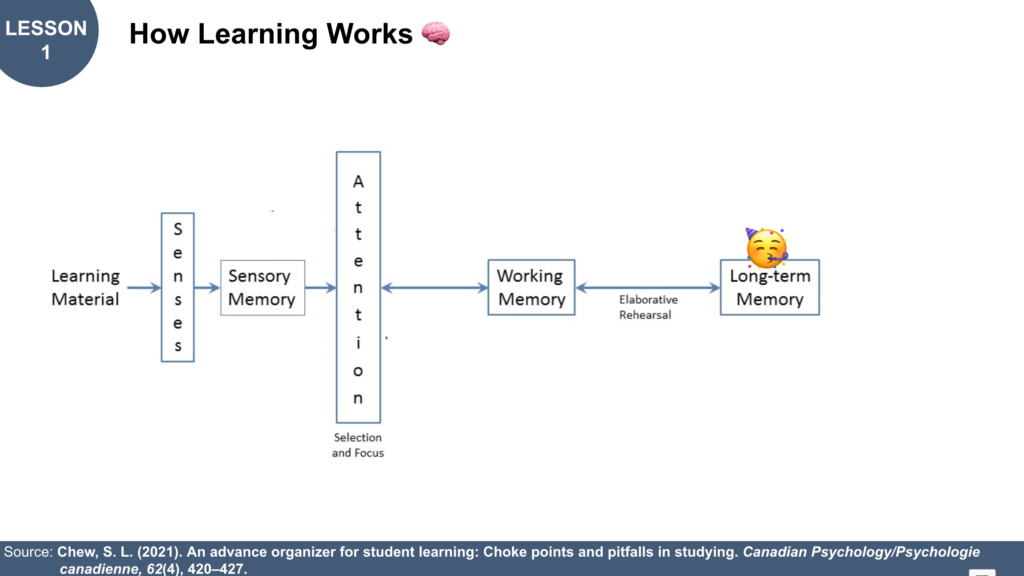
Hey there, students! I'm happy to be with you today.
Listen — today I want us to understand what we're after when we're learning and what it takes to get there. This is really important to me because I don't ever want you wasting your time as a learner in school. You've got a full life to live, and learning is a key part of that! But let's not let learning be harder or more complicated than it needs to be, eh?
Now, what we're going to do in our spiral notebooks for the next five minutes or so is make the beginning of a diagram we'll come back to a few times. Here's a picture of it on the screen, but we're actually going to simplify this down for ourselves. Go ahead and turn your notebook sideways so that it's like a hot dog and let's get started.
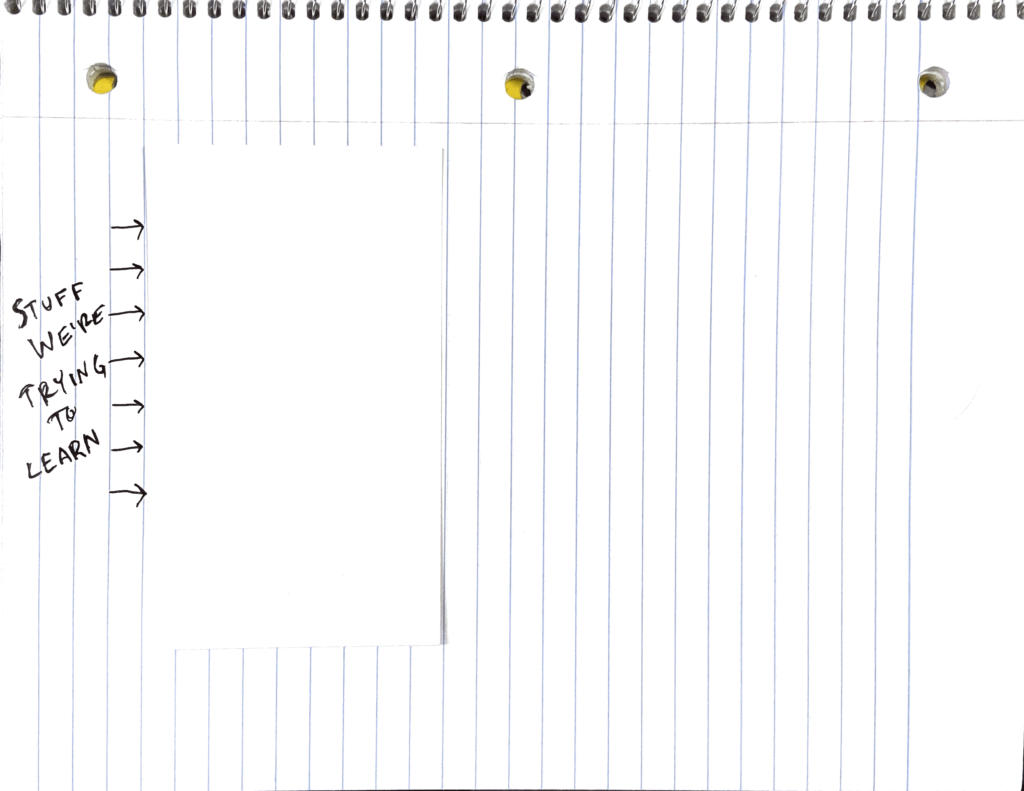
So first, right tight to the margin here let's get all the things we're trying to learn. I'm going to draw lots of arrows from this because it's a lot of stuff! Whether you're talking about world history or grammar/mechanics or literary devices or algebraic equations, there are a lot of things coming at us in our classes.
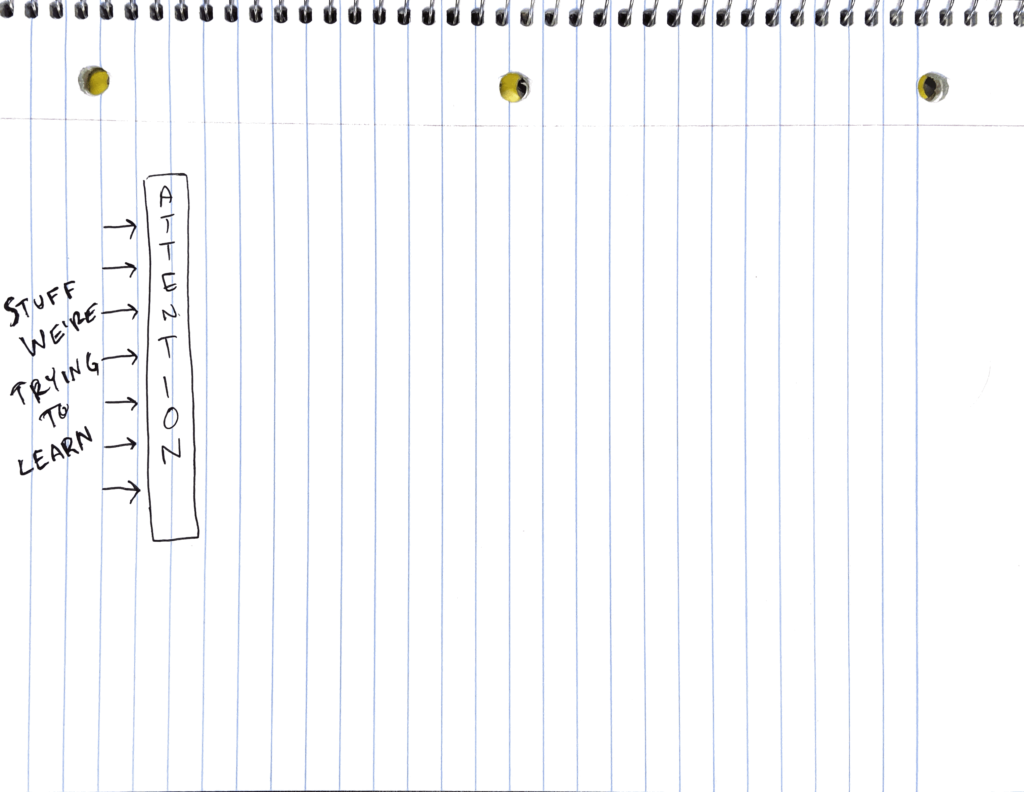
And this little guy is one of the reasons why that can get overwhelming pretty quickly: attention. It's like a wall that all of that stuff that we're trying to learn has to get through. Or think of it like a funnel if you want, or a filter. We'll be talking more about attention in future lessons. Lots of us overestimate the degree to which we understand how attention works! We'll fix that common mistake soon.

Now, we don't learn everything that we pay attention to, right? We've got to work with ideas — to think about things — in order to initiate the learning process. That's where our first kind of memory comes in — working memory. This is the super limited number of things that we're able to think about at any given time. And this is another area that folks tend to underestimate the importance of.
We'll fix that common mistake, too.
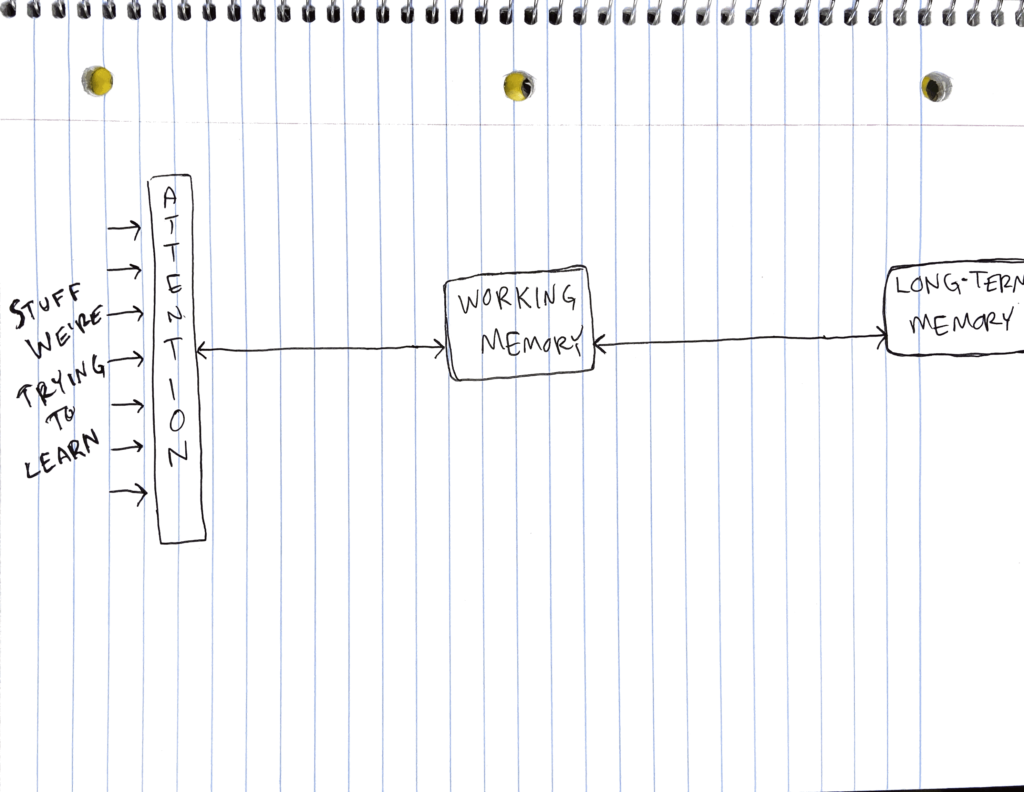
Finally, we've got long-term memory — oops, almost ran out of room there, didn't I? That's okay. Now listen — once stuff gets in here, we've learned it! And what we want is for the double arrow between working memory and long-term memory to be like a super highway or a really fast Ethernet cable.
Wait, you don't know what an Ethernet cable is? Okay, how about a really fast Wi-Fi connection? There we go.
Yes, so our goal is to get stuff into long-term memory and to make the path between the stuff we have in long-term memory and the stuff we're able to think about in working memory to be really, really quick and easy. So let's draw some things to indicate those goals: how about a celebration emoji and some lightning bolts.
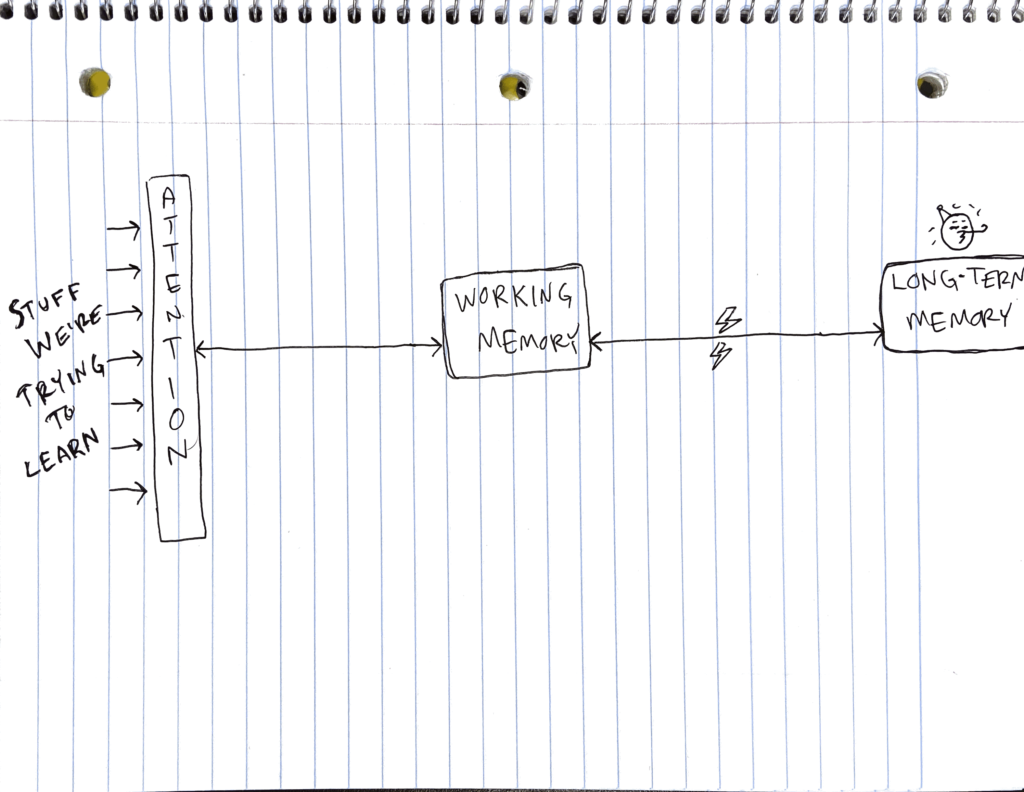
Niiiiice. Wow. When I look at what we've got started here, I get really excited about where we're going.
Let's move on to the next part of our lesson now — tomorrow, we'll dive back into this picture.
Note from Dave: This article is part of a series of mini-lessons designed to improve student motivation by cultivating the Effort and Efficacy beliefs. More on the series here; more on the idea of the five key beliefs here.
Leave a Reply